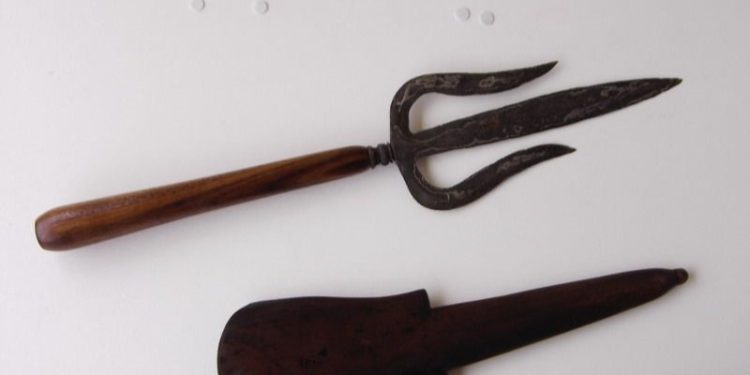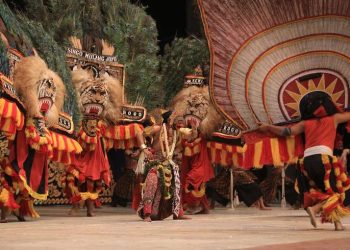Jakarta, Indonesia Sentinel — Indonesia’s rich cultural heritage spans the archipelago, encompassing traditions that include distinctive traditional weapons. Among them is the Trisula Spear, a traditional weapon from Palembang, South Sumatra, steeped in cultural and spiritual significance.
The Trisula’s design is striking with three sharp prongs resembling a large fork, a shape that gives it its name. The word “trisula” comes from Sanskrit, meaning “three spears” or “three points.” Its design was influenced by both Indian and broader Southeast Asian traditions.
In local tradition, it is more than a combat weapon; it serves as a symbol of authority, protection, and mystical power, believed to ward off misfortune and instill courage in its bearer.
Historically, the Trisula was used in ceremonial events and spiritual rituals, often passed down through generations of aristocrats and community leaders.
Its legacy is tied to Palembang’s history as the seat of the Sriwijaya Kingdom and later the Palembang Darussalam Sultanate maritime and military powers where traditional weapon-making thrived. Warriors of the Sriwijaya Kingdom once wielded the Trisula as a primary battlefield weapon.
Physically, the spear was a wooden stick with a central steel blade flanked by two shorter side prongs, forming a sharp, Y-shaped head. The shaft is typically crafted from hard woods such as nibung or kemuning, prized for their durability and mystical associations. Sacred versions may feature carved symbols or be wrapped in yellow cloth, signifying purity and protection.
The Trisula’s size varies from imposing two-meter ceremonial pieces to shorter versions designed for traditional martial arts. Its distinctive side prongs give it a tactical edge: they are not only for striking but can also trap and disarm an opponent’s weapon in close combat, making it as much a defensive tool as an offensive one.
The Trisula Spear embodies not only offensive power but also defensive strategy and ingenuity in combat. In Palembang’s cultural and spiritual context, the weapon holds profound meaning.
Often regarded as a sacred heirloom, the Trisula is believed to possess supernatural powers—especially after undergoing ceremonial consecration by a village shaman or spiritual leader.
Many older residents in Palembang believe the spear can act as a mystical guardian for homes or sacred spaces, often placed above the entrance of traditional houses or in a corner of the main room to ward off misfortune.
Read Also:
The weapon also appears in traditional arts such as war dances and silat martial arts performances, where it symbolizes the struggle between good and evil. In local folklore, the Trisula is often depicted as the weapon of legendary warriors or mystical figures capable of banishing spirits and defeating dark forces.
Philosophically, the spear’s three prongs are interpreted as symbols of balance—representing the harmony between thought, feeling, and action, or the unity of heaven, earth, and humankind in life’s journey.
In Palembang today, the Trisula is frequently displayed in cultural exhibitions, traditional festivals, and as a symbolic decoration during local ceremonies such as sedekah dusun or major cultural celebrations.
With its historical, aesthetic, and spiritual value, the Trisula remains a distinctive emblem of Palembang’s heritage, worthy of preservation not only as a relic of the past but also as a vital part of Indonesia’s diverse cultural identity.
(Raidi/Agung)

























